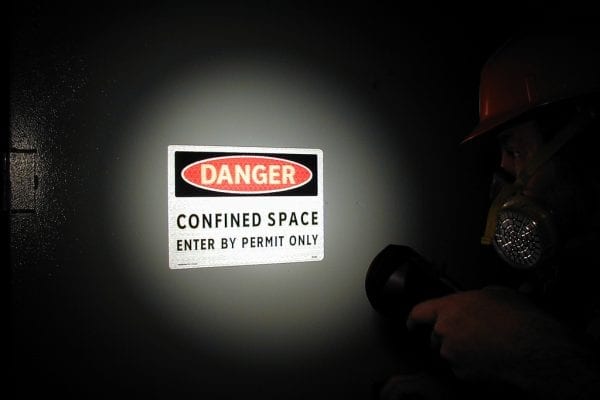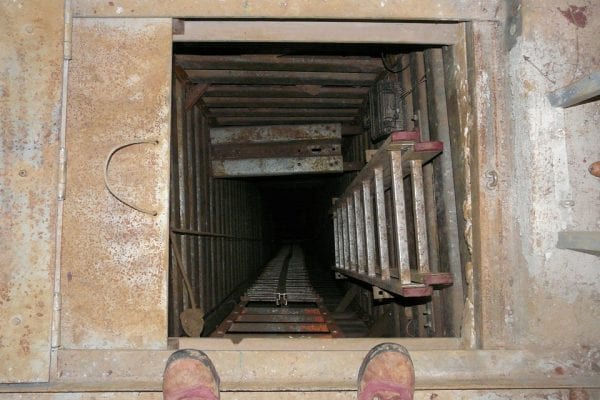More than 900 people die in the construction industry each year. Tragically, many of these deaths are preventable. Annually, OSHA cites tens of thousands of safety violations on job sites across the country, and every year the same violations pop up again and again.
Is your company guilty? Check your compliance against the top ten most cited OSHA violations from 2016.
1. Duty to Have Fall Protection
Falls are a leading cause of workplace deaths across all industries, including construction. According to OSHA, falling is responsible for 38.8% of construction worker deaths each year. Six of the top ten OSHA violations for 2016 had to do with fall protection, including #1, the most basic duty to provide fall protection.
The duty to have fall protection, per Standard 1926.501, requires employers to provide adequate safety equipment and systems and proper supervision of employees in circumstances with fall hazards.
At a Glance
- Number of 2016 violations (construction industry): 5,590
- Standard: 1926.501
- 2016 ranking: 1
- 2015 ranking: 1
2. Scaffolds: General Requirements
Providing adequate and appropriate scaffolding prevents injuries related both to falling (the #1 cause of deaths) and injuries from falling objects (another leading cause of construction worker deaths). Scaffolding standards hit OSHA’s top ten citations in 2016 twice, including general requirements at #2 (see #9 for the second instance).
General requirements for scaffolds, per Standard 1926.451, establish required capabilities, strength, structure, and accessories for scaffolds, including load bearing capacity, proper construction, distance between platforms, and the presence of planks on platforms.
At a Glance
- Number of 2016 violations (construction industry): 3,102
- Standard: 1926.451
- 2016 ranking: 2
- 2015 ranking: 2
3. Stairways and Ladders
Perhaps due to their simplicity and commonness, ladders are often overlooked as a source of workplace accidents. Yet their improper use is a leading cause of injuries due to falls and falling objects. The standard for stairways and ladders was OSHA’s #3 most cited source of violations in 2016.
Requirements for stairways and ladders, per Standard 1926.1053, establish the proper load bearing capacity, rung and step spacing, clearance, and proper use of stairways and ladder equipment, whether they are commercial items, site specific, or job-made.
At a Glance
- Number of 2016 violations (construction industry): 2,091
- Standard: 1926.1053
- 2016 ranking: 3
- 2015 ranking: 3
4. Fall Protection: Training Requirements
The duty to provide adequate training in fall protection is defined by OSHA Standard 1926.503, the #4 most cited violation for 2016. Protections include the duty to ensure all employees are aware of all hazards in the work area, and the duty to provide training in the proper use of all related equipment.
At a Glance
- Number of 2016 violations (construction industry): 1,239
- Standard: 1926.503
- 2016 ranking: 4
- 2015 ranking: 4
5. Eye and Face Protection
Eye injuries are a leading cause of workplace injury in the construction industry. Each year, more than 10,600 eye injuries force workers to miss work.
Requirements for eye and face protection are defined by OSHA Standard 1926.102, the source of the #5 most cited violation for 2016. The standard includes requirements for protection from hazards, including flying particles, molten metal, liquid chemicals, acids or caustic liquids, and others, and outlines the specifications for protective equipment.
At a Glance
- Number of 2016 violations (construction industry): 1,180
- Standard: 1926.503
- 2016 ranking: 5
- 2015 ranking: 5
6. Hazard Communication: Toxic and Hazardous Substances
Contact with hazardous materials is a major cause of injuries in the construction industry, from exposure to asbestos and lead-based paint to inadequate protection from solvents and other chemicals used on the work site. Failure to follow OSHA requirements for hazard communication was the #6 most cited violation.
Requirements for hazard communication are defined in OSHA Standard 1910.1200. The standard includes identifying, classifying, labeling, and communicating the presence of hazardous chemicals on the job site.
At a Glance
- Number of 2016 violations (construction industry): 739
- Standard: 1910.1200
- 2016 ranking: 6
- 2015 ranking: 7
7. General Safety and Health Provisions
OSHA Standard 1926.20 establishes that no contractor or subcontractor “shall require any laborer… to work in surroundings or under working conditions which are unsanitary, hazardous, or dangerous to his health or safety.”
The standard covers accident prevention, materials, and personal protective equipment, among other things. It was the source of OSHA’s #7 most cited violations of 2016.
At a Glance
- Number of 2016 violations (construction industry): 737
- Standard: 1926.20
- 2016 ranking: 7
- 2015 ranking: 8
8. Head Protection
Between 2003 and 2010, more than two thousand construction workers died from a traumatic brain injury, representing 25% of all construction related fatalities. Many more workers suffer non-fatal injuries to their heads that can have life-altering impacts.
OSHA Standard 1926.100 establishes standards for personal protective and life-saving equipment, specifically for head protection. It was the source of OSHA’s #8 most cited violations of 2016.
At a Glance
- Number of 2016 violations (construction industry): 736
- Standard: 1926.100
- 2016 ranking: 8
- 2015 ranking: 6
9. Scaffolds: Aerial Lifts
OSHA’s requirements for aerial lifts include specifications for construction materials, load bearing capacity, wiring, controls, and use. Standard 1926.453 was the source of OSHA’s #9 most cited violations in 2016.
At a Glance
- Number of 2016 violations (construction industry): 732
- Standard: 1926.453
- 2016 ranking: 9
- 2015 ranking: 9
10. Fall Protection Systems Criteria and Practices
Fall protection failures fill out the #1, #4, and the #10 slot of most-cited OSHA violations in 2016. Standard 1926.502 specifies systems criteria and practices for fall protection on the work site, including the use of guardrails and other fall protection systems.
At a Glance
- Number of 2016 violations (construction industry): 590
- Standard: 1926.502
- 2016 ranking: 10
- 2015 ranking: 10






